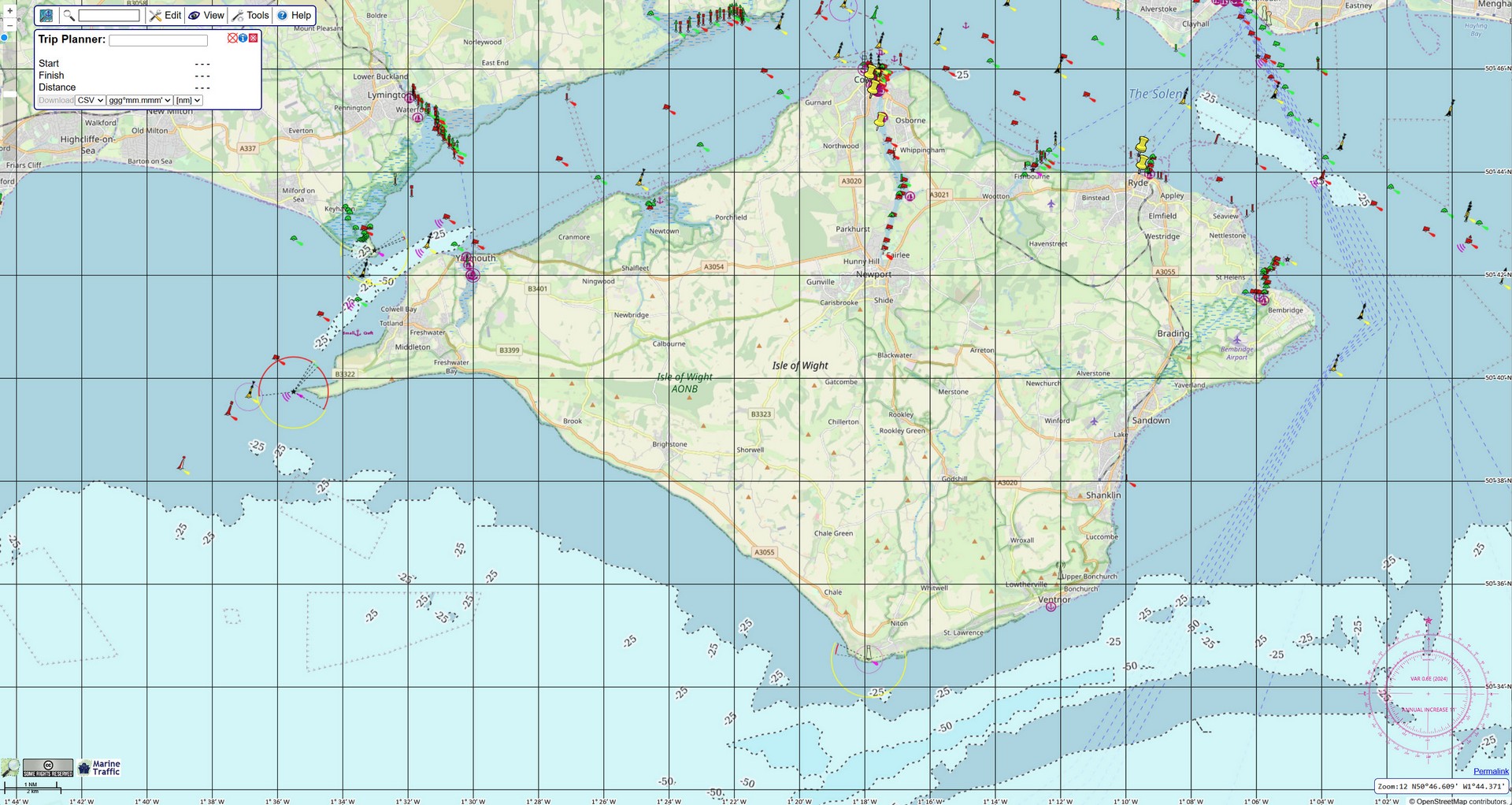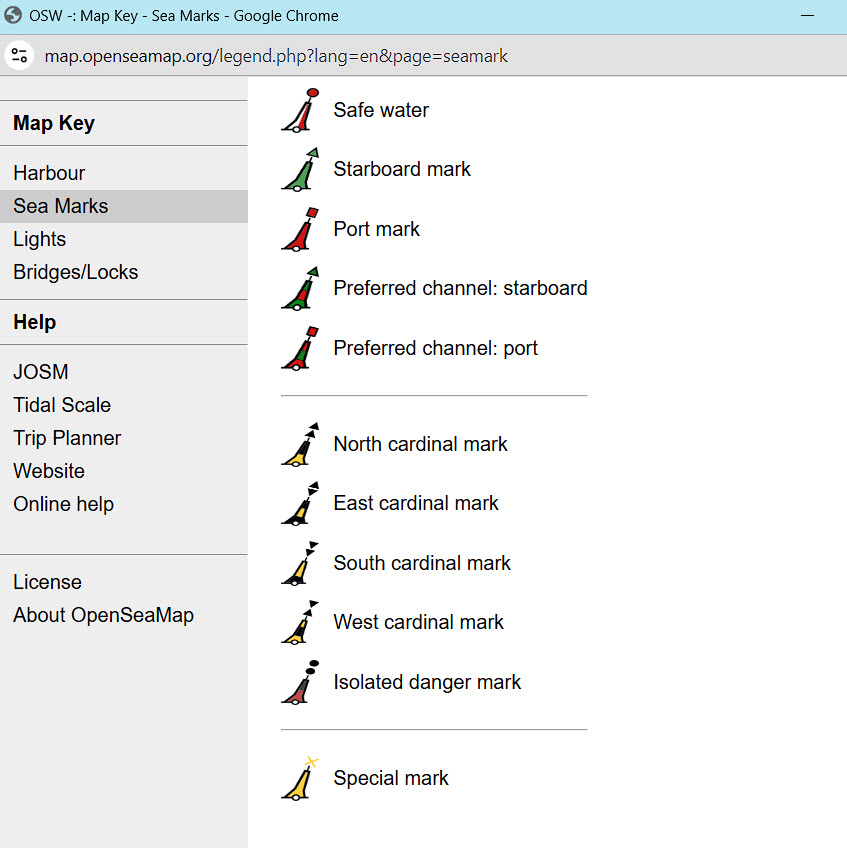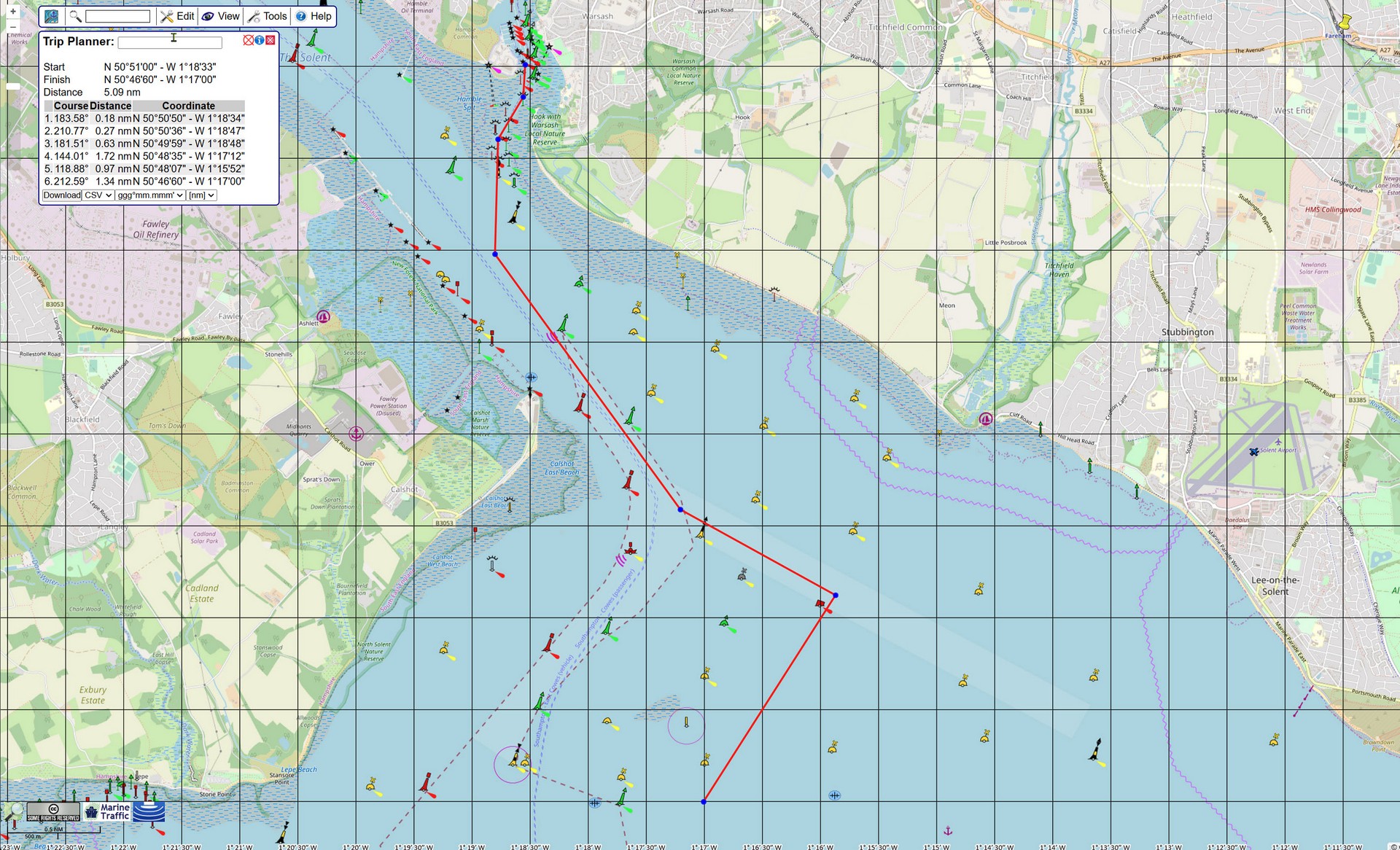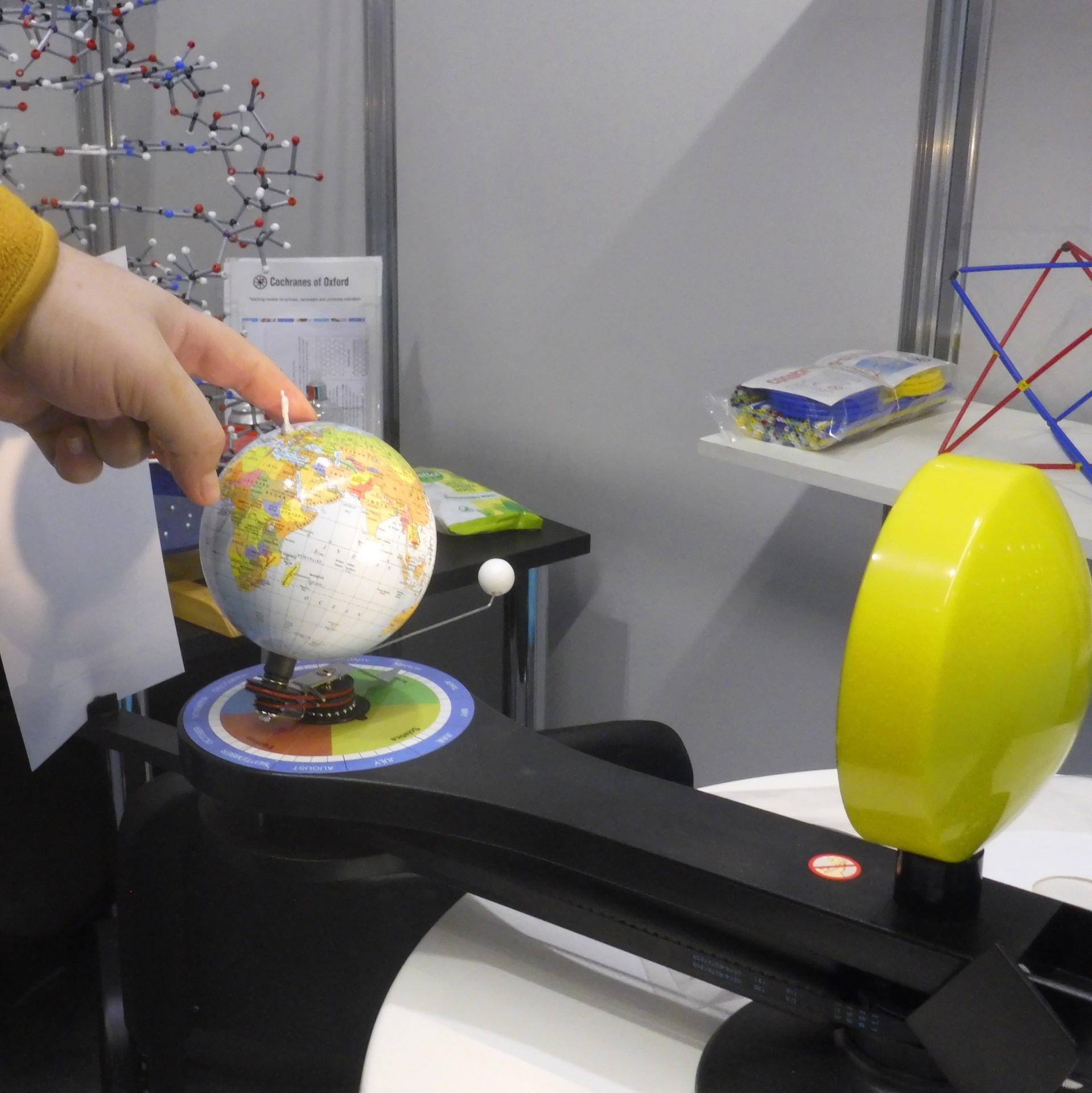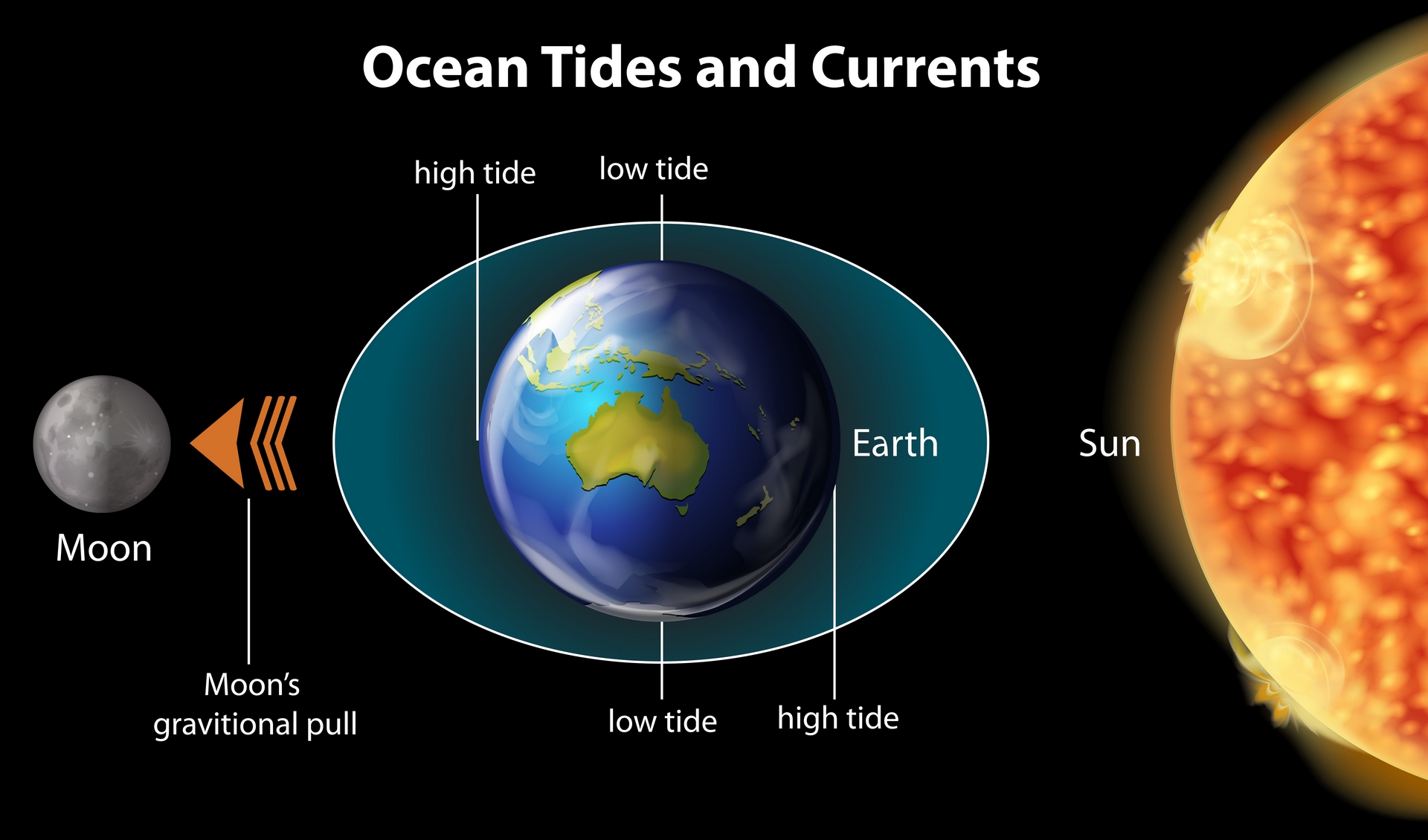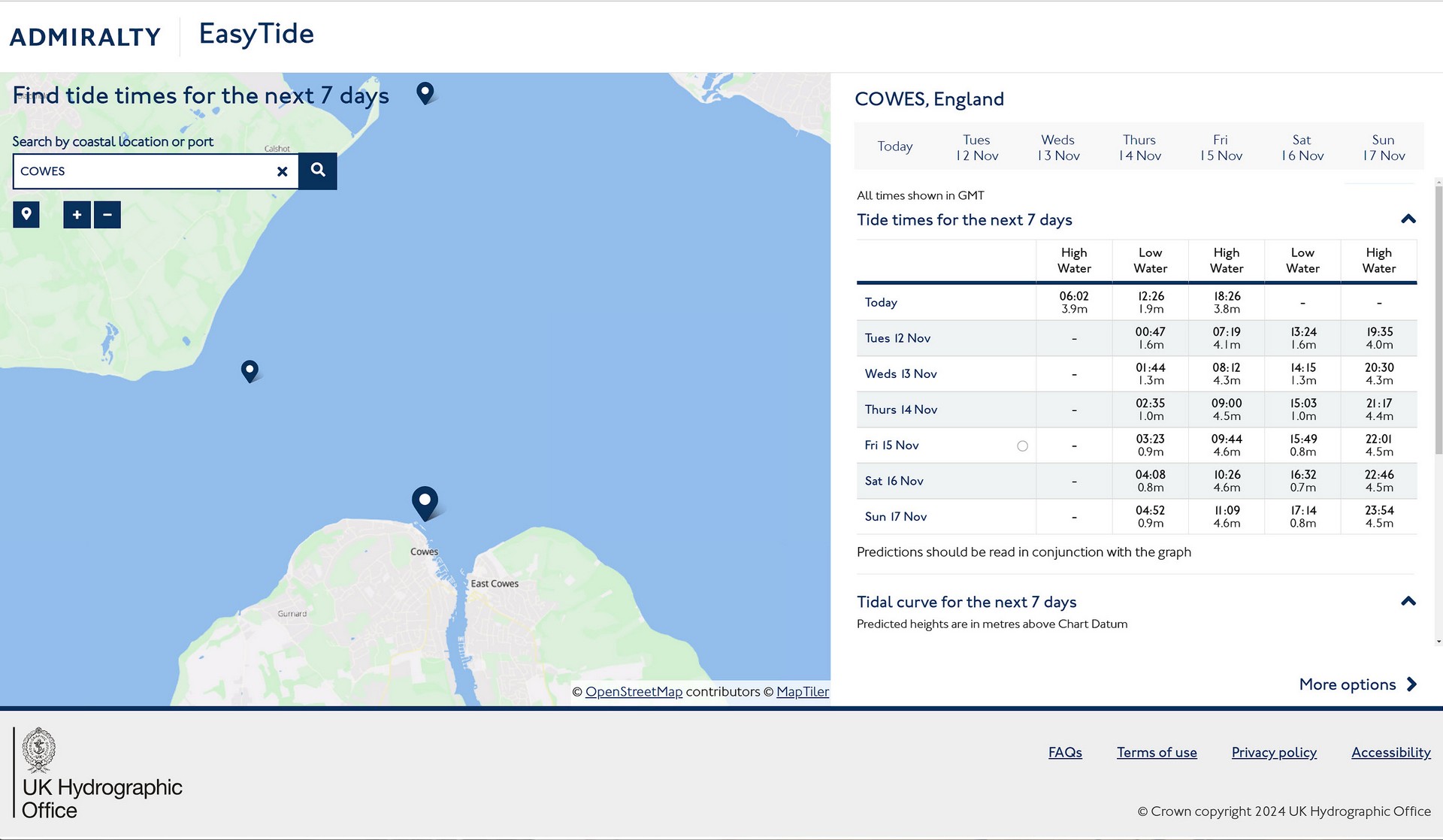In Episode 8, we embark on learning the essentials of navigation, using charts to interpret the waterways safely and effectively. We’ll explore different chart symbols, learn to interpret map colours, understand tides and currents, and plot a journey across the Solent from the Hamble River to Cowes on the Isle of Wight. Let’s start by familiarising ourselves with the key elements of navigation charts.
Navigation charts, especially Admiralty charts, are filled with symbols that convey essential information about waterway conditions:
Buoy Shapes and Colours:
Buoys come in various shapes and colours, each indicating specific information about safe passage. For example:
Red and Green Buoys:
Mark port (red) and starboard (green) sides of the channel.
Yellow and Black Buoys:
Used as cardinal markers to indicate safe passing directions based on cardinal points.
Isolated Danger Buoys:
Black with red bands, marking underwater hazards.
Marks of Wrecks and Underwater Obstructions:
Symbols on the chart indicate wrecks, rocks, sandbanks, and other underwater obstructions. Be sure to avoid these unless your boat’s draft allows it.
Colour Coding on Charts: Colours represent water depth and land features:
White Areas:
Shallow water or intertidal zones.
Blue Areas:
Deeper water.
Green and Yellow:
Indicate land or very shallow areas that dry out at low tide.
Differences with Admiralty Charts:
Admiralty charts often provide more detailed information for professional or commercial use and may include tidal stream data, lighting sequences for buoys, and additional depth details. Other charts, like recreational maps, may simplify this information.
The maps shown here are are provided by https://map.openseamap.org/
With our chart basics in hand, it’s time to plan a short journey across the Solent. For this route, we’ll identify safe passage markers, estimated time, and use our tide tables to anticipate currents.
Plotting the Route:
Using your chart, mark the Hamble River as your starting point and Cowes on the Isle of Wight as your destination.
Identifying Waypoints:
Note key waypoints along the way, like navigation buoys and light markers, to keep you on course.
Understanding tides and currents is essential for safe navigation and docking:
What Causes Tides:
Tides are primarily caused by the gravitational pull of the moon and sun. As the earth rotates, this gravitational influence creates regular rises and falls in sea levels.
Types of Tides:
Spring Tides:
Occur when the sun and moon are aligned, creating the highest and lowest tides.
Neap Tides:
When the sun and moon are at right angles, resulting in less extreme high and low tides.
Using Tide Tables:
Tide tables provide information on daily high and low tides. This is crucial for planning, especially when navigating areas with significant tidal changes.
Example of Using a Tide Table
Suppose you are setting out from the Hamble River at 10:00 AM. By consulting the tide table for the Solent area, you’ll see the times of high and low tides, allowing you to choose the best time for safe passage and arrival at Cowes.
Draft Awareness:
Knowing your boat’s draft is important when navigating tidal waters, as low tides may expose hazards or make entering certain harbours challenging. Always check the chart and tide table to ensure enough depth for your vessel.
Finally, we’ll use the tide and current information to adjust our course. For example:
Crossing the Solent with an Ebb Tide:
If the current is moving out, you’ll want to account for drift, possibly angling your course slightly against the current to reach Cowes efficiently.
Entering the Harbour:
Aim to enter Cowes near high tide for adequate depth, ensuring your boat’s draft isn’t a limiting factor.
This episode introduces the basics of navigation from charts, covering symbols, buoy markers, tide tables, and plotting a practical journey. With these skills, you’re ready to take on more complex navigation challenges.
In our next episode, we’ll look into electronic navigation aids to complement your chart-based skills, bridging traditional and modern navigation techniques.
